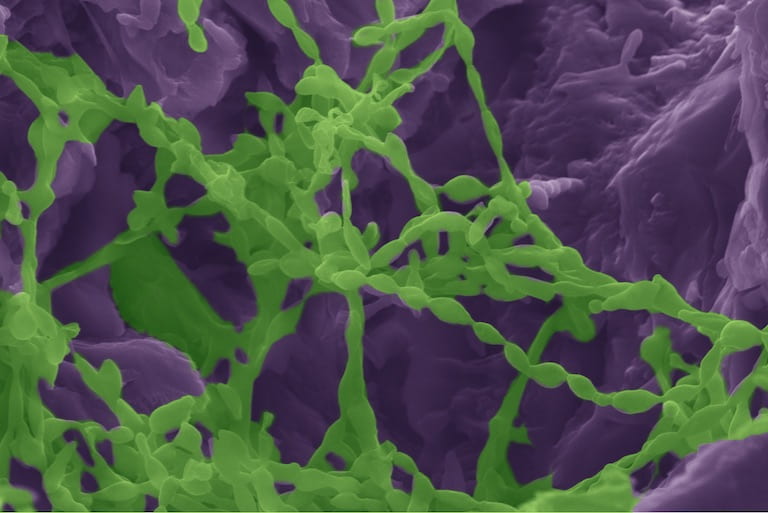
In recent years, researchers at UC Irvine and other institutions have studied the molecular mechanisms by which microbes survive in hyper-arid desert environments by taking mineral nutrients and water from rocks. The Air Force Office of Scientific Research has awarded a UCI materials science team $4 million for a three-year project to perfect the use of microscopic life-forms in the extraction of rare earth elements and as productive components in additive manufacturing systems. The group, led by principal investigator David Kisailus, UCI professor of materials science and engineering, is looking for ways to employ microbes as miners in extreme conditions in remote environments, including the moon, Mars and asteroids. The researchers are also exploring the ability of these nearly indestructible organisms to work on our behalf in hazardous places like toxic waste sites. “Microbes will not only be used to extract minerals, but we will leverage their ability to transform the rocky matrix of 3D-printed media to form structurally robust, living architected materials,” Kisailus said. “In the long term, we look toward utilizing engineered or adapted biological systems to modify landscapes, extract valuable minerals and implement them in fabrication processes like additive manufacturing.”
He and his UCI research group in this AFOSR Space University Research Innovation project have partnered with Jocelyn DiRuggiero, associate professor in Johns Hopkins University’s Department of Biology, who co-authored papers with Kisailus about microbial miners in Chile’s Atacama Desert. Joining their team are a group of expert scientists including Nathan Gianneschi, professor of chemistry at Northwestern University; materials scientist Jinhui Tao and computational scientist Margaret Cheung of Pacific Northwest National Laboratory; and other collaborators from the Air Force Research Laboratory, Lawrence Berkeley National Laboratory, Brookhaven National Laboratory and the Rio Tinto mining corporation. The interdisciplinary team of materials scientists, microbiologists, chemists and engineers will glean critical adapted mechanisms from microorganisms that have evolved over hundreds of millions of years to survive in severely dry and radiation-intense surroundings. “Many of these microbes have colonized in extreme environments by adapting specific molecular machinery and mechanisms to not just survive but thrive on their geological substrates,” Kisailus said. “By revealing the specific biological materials and understanding the mechanisms by which they are used to extract elements of interest, we can develop not only efficient and environmentally friendly biomining processes, but also new additive manufacturing processes under extreme conditions in both the laboratory and remote environments.”
